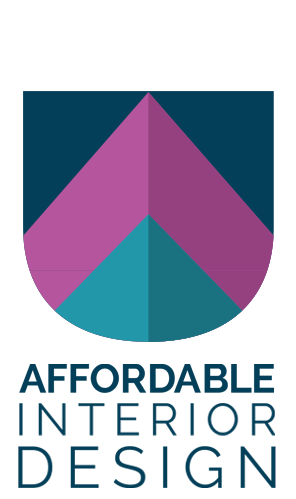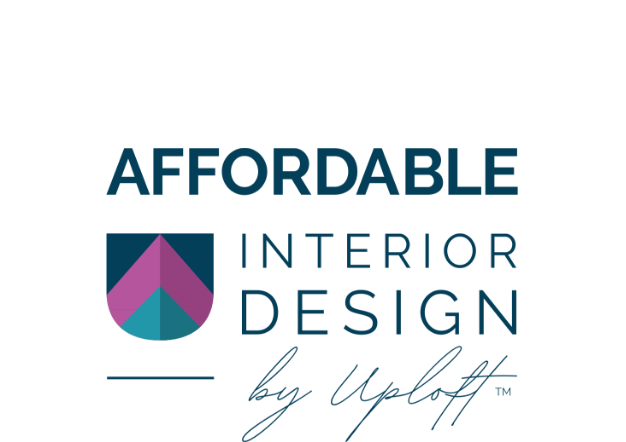This week I’m joined by special guest Paulina DuPain, who has been on previous episodes of the podcast. She has been in several different aspects of interior design in her career of over 10 years, so I thought she would be the perfect person to answer some of your questions with me about the business side of interior design.
This episode, we discuss…
[2:03] Paulina’s background in interior design
Paulina has been working with Affordable Interior Design for the last seven years. For interior design as a whole, she has been doing it for over 10 years. She studied interior architecture and interior design in New York City. She has done it all! Not only has she worked for a bunch of architectural firms doing architectural interior design, but she has also worked at tile stores, done top to bottom renovations, and worked for herself.
[3:50] The most challenging and rewarding parts of the interior design industry (Millicent)
Question:
I am just beginning to think about what a life would look like as an interior designer. Could you speak briefly on what you find the most rewarding in this profession? Also, what are the most challenging aspects?
Paulina’s Answer:
It gives me a way to be creative. If you’re creative, this industry will be rewarding because of all the fun projects and people you get to work with. That’s the biggest plus.
The most challenging part has been human relationships. You have to build that relationship with the client, and you’re often their therapist. So any industry dealing with people can be challenging. Also, since Covid, we have had some supply chain issues, which is a difficult part of our industry.
Betsy’s Answer:
One thing I would say about that, though, is when I worked for a high-end firm, my day-to-day was not creative. The senior designer, Tom Felicia, and his senior staff got to be super creative. They were the ones choosing the rugs and paint colors. I was just there to get the samples and basically drive them to the showroom. So I found that, as a junior designer, I wasn’t making too many creative decisions. I actually felt a little frustrated by my lack of creative autonomy working at a firm. Even people who were just higher than me on the ladder still weren’t making creative decisions. There’s no way I was going to use my creativity for 5 to 10 years.
The number one pain point for me is also the supply chain issue. I want to recommend certain things to clients, but they may not be available until next year. It’s so disheartening because I have to suggest something that I’m not as excited about because the client may be in a hurry.
For me, the most challenging aspect is that this industry is subjective. I feel secure and excited to present if I create this beautiful design that I think is perfect and aligns with the inspiration images that a client showed me. But, if they’re like, Betsy, I don’t like this, which doesn’t happen very often, I can’t convince them to like something. I can give my insights as to why I selected items, and I can present in a very mindful way so that they hear my explanations, but at the end of the day if they hate that piece of art, I can’t convince them to spend $600 on it. I don’t want anybody having something they hate. There’s no right or wrong, but you can feel so right and be so wrong. Sometimes that’s just a dagger in the heart when you work really hard.
[12:31] Working on boundaries and setting them with clients (Wendy)
Question:
When working with clients, how do you work on boundaries? For example, I have had a few run in’s with clients where they would text me and expect prompt responses. Is it better to just charge them more when that happens?
Paulina’s Answer:
If this is outside your scope of work that has been agreed on with your clients, you should absolutely charge more. However, if this is within the scope of work that you have discussed, you wouldn’t charge more. I would suggest creating firm boundaries from the start. Start by making a plan and adding in an agreed number of follow-ups. This may also mean that you correspond with your clients by email and do not give out your phone number for them to have instant access to you. You want to be responsive, but they also need to give you some time to get back to them with the proper answer.
Betsy’s Answer:
It’s all about that initial expectation and agreement. When your client wants to contract you for a project, you must ensure their expectations are in check. This is how our process works. This is how I’m going to be working with you. If you need more than that, then it will look like this. As we discussed in our previous question, this is a subjective industry. You’ll have people who circle back, and you need to have a process in place that’s been clearly agreed upon for you to refer them back to. This helps everyone stay on the same page when we’re talking about those agreements and whatever that scope of work that Paulina referred to looks like. Also, be sure always to have these things in writing. As long as you set everything up from the start, you’ll have an excellent client relationship, even when things get rocky.
[16:00] Getting your clients on board with your vision (Sarilou)
Question:
When you plan reveal calls with your clients, how do you phrase or deliver the material to better help yourself get them in on your vision? I have, on occasion, had trouble fully explaining what my vision was to the client, which led to some communication issues.
Paulina’s Answer:
The most important part is not to send them the presentation before you get the chance to explain your choices. You want to get them on Zoom or any other video platform if you can’t be there in person to explain your choices to your client while showing them the presentation. You want them to understand your vision and where you are going with it before you get into the presentation. We often forget about this because, as designers, we put so much thought into why we’re picking specific colors or fabrics that your clients won’t understand until you bring them into your thought process.
When you get them on the call, you can tell them why you picked a performance fabric because their dog sheds and kids are spilling stuff everywhere. So I want to ensure that it’s with you for many years and could serve you well. Nothing can get lost in translation this way, and they understand all of your design ideas and choices.
Betsy’s Answer:
After presenting the mood board to a client, how often have we heard, “oh my gosh, I would have never picked any of these things, but I love it?” This is like how it should be. I couldn’t agree more with Paulina that you need to be in control of that presentation. You need to control the moment you first share with them everything you found along with the beautiful mood board. Things just click! They can see themselves in the mood board in a way they wouldn’t have been able to without your guidance.
[19:20] Advice for those who dream of pursuing interior design (Pam)
Question:
What advice do you have for someone who has always dreamed of being an interior designer? I am in my 40s, and I was an elementary school teacher and want to pursue my passion of design.
Paulina’s Answer:
It’s never too late. Go for it. There are lots of programs. We have the Uplift Interior Design Academy, where you can start and become an interior designer without getting a degree. Also, there are other programs out there that you could choose from to earn a four-year degree, a six-year degree, or just a two-year one. It all depends on your investment of time. To be in the industry, you don’t necessarily have to have a degree in interior design.
Betsy’s Answer:
The key when you’re in your second career is to listen to your heart. If your heart has been calling you to be an interior designer, but instead, you took a different path, it’s time to live the life you’ve been dreaming of. I can tell you right now that you can make money as an interior designer. The number one thing I hear is that people don’t feel they can make money in this industry. Paulina and I can tell you that’s not true. We both make a living exclusively being interior designers.
The other thing is, you do need some education. You don’t need to go to a two, four, or six-year school to design retail residential interiors. I definitely think you don’t need to go the traditional school path. If you want to be a high-end designer and do everything custom, it would be a perfect idea to go down the traditional school path. However, many people who’ve already been in debt with university don’t want to return.
As Paulina mentioned, she is my co-teacher in our ten-week academy, where we teach people everything they need to know to be interior designers. You work in retail and residential spaces in 10 weeks. There are robust projects, quizzes, and things like that included for you. You will learn exactly what you need to know to work with retail residential clients right now. I don’t think it’s wise not to get any education. I had to mess up along the way. Sometimes, I had to redo things at a client’s home and cover all of the charges, especially the shipping fees.
Not only did I lose a ton of money, but I also lost a ton of good faith and referrals. I learned quickly from the school of hard knocks. Having a little bit of education and applying that to clients would have given me much more confidence so much faster. So I just want to share with you that I think some education is necessary. I do not think formal education is required, but you need some sort of foundation. Once you have that foundation, you can really fly.
On our Uplift Interior Design Academy website, you can find the Becoming an Interior Designer: What’s Your Path Quiz. You can take the quiz to find out what type of school is right for you. I will guide you through this two-minute quiz to ask what kind of spaces you want to design and what your dream career looks like? Then, I point you in the right direction based on the goal you want to achieve.
Also, Pam, your experience as an elementary school teacher can directly translate to an interior design career. As a school teacher, you’ve learned to help present, so you feel very confident in front of a crowd, telling them why you selected things, and being in charge. That’s huge! You need to have confidence with clients. You need to be able to stand up there and command the room. There are so many different applications. So don’t think that your previous career was a waste. Find a way to channel that to set you apart.
Links:
Website:
Book:
https://www.betsyhelmuth.com/my-book
Become a Premium Member:
https://affordableinteriordesign.com/podcast
Submit Your Questions:
https://affordableinteriordesign.com/podcast
Instagram:
https://www.instagram.com/affordableinteriordesign
Facebook:
https://www.facebook.com/AffIntDesign
Uplift Interior Design Academy:
https://www.uploftinteriordesignacademy.com
Becoming an Interior Designer Quiz:


